Art
War art
The National Collection of War Art consists of about 1,500 artworks, including portraits, battle scenes, landscapes and abstracts, depicting those who served New Zealand in times of war, and the arenas in which they served.
The collection includes both official pieces, by artists formally commissioned by the New Zealand government, and other unofficial art works that were acquired for or donated to the collection. Most artworks in the collection depict World War One and World War Two. However, official war art continues to be commissioned by the New Zealand Defence Force up to the present day.
-
World War One art
The collection originated in World War One, when countries used official war artists to provide a record of involvement in the conflict. New Zealand did not appoint official war artists until late in the war, due to the cost. Many works of art prompted by the war were created before that time. Some of these were later purchased for or donated to the collection.
New Zealand’s first officially appointed war artists were Nugent Welch, George Edmund Butler and the English artist, Alfred Pearse. Their appointments were made in 1918, following the example of the British, Canadian, and Australian governments, each with their own war artists in the field.
Sir Andrew Russell, Commander of the New Zealand Division in France, acted first, asking for a return of artists in the Division. In April, he appointed the landscape artist Nugent Welch as ‘Divisional Artist’, attaching him to the Headquarters of the New Zealand Division. In July, Welch returned to London where he painted his first works from photographs and sketches. Prime Minister William Massey approved the employment of further artists in June. Consequently, George Butler and Alfred Pearse were enlisted as official New Zealand War Artists for a six-month period from September 1918.
On 22 September 1918 Welch returned to France, followed by Butler and Pearse 5 days later. There the artists completed sketches and watercolours. Pearse returned to London by the end of October to work on large canvases, while Butler and Welch worked in France, up to and after the 11 November armistice.
The War Artists were demobilised in March 1919, but further artworks were commissioned by the new War Museum Committee in September 1919. These included six portraits of the New Zealand Victoria Cross winners, for which they paid £50 each. The Committee also authorised Butler to enlarge some of his sketches to oils. The number of portraits was subsequently increased to seventeen, with the works being completed by 1921.
-
The fine arts war collection
Following World War One, the war art collection was nominally under the control of the Dominion Museum, whose register from about 1922 recorded an 86-piece Fine Arts War Collection. There was an expectation that the collection would eventually be displayed in the new National War Memorial Museum. However, the new Museum building was not completed until 1936, leaving the World War One paintings to be managed instead by the National Art Gallery. The Gallery considered the collection to be of historic rather than artistic worth, and therefore did not display them. The artworks were kept in storage, where some remained until the 1980s. Several attempts were made to organise an exhibition of the collection in the 1920s, but this did not eventuate, and the artworks remained largely unseen. The collection received further additions during this post-war period, when, at various times, the British government presented New Zealand with artworks by British war artists.
-
World War Two art
The role of war artists was recognised more rapidly in World War Two than in World War One, with artists and art groups lobbying for appointments. Army archives indicate some degree of commitment to the idea of a pictorial record of the war, and an official appointment of Austen Deans as war artist was planned for 1941. However, having been wounded, Deans was captured by the Germans and spent the remainder of the war as a prisoner of war.
Instead, in January 1941 Bernard Freyberg, General Commanding the New Zealand Forces, made a personal appointment of Peter McIntyre, an artist who had enlisted in London. McIntyre was sent to Crete, where he painted the German invasion. Following this he accompanied New Zealand forces on the North African Campaign, being present at the Battle of Sidi Resagh, the fall of Tobruk, the offensive against Rommel, the Minquar Qa’im breakthrough, followed by Tripoli, and the final battle at Wadi Akorit. Later, McIntyre was with the New Zealand Division for the Battle of Cassino in the Italian Campaign.
Several exhibitions were held of McIntyre’s works during the war. An exhibition was also taken on tour through New Zealand, raising money for the Red Cross. Another was held in London where thirty-nine of his paintings, which had been shown first to the New Zealand troops in Italy, were exhibited in the New Zealand Fernleaf Club, under the title ‘Exhibition of Official War Paintings of the Second NZEF’.
Two further official war artists were appointed in March 1943, to record New Zealand’s involvement in the Pacific campaign. Russell Clark and Allan Barns-Graham, both already in the Army, were attached to the 3rd Division, which assisted the United States’ assaults on islands held by Japanese forces. Their artwork depicts operations on Vella Lavella, Mono and Stirling Islands in the Treasury Islands group, and the capture of Nissan and other islands in February 1944.
The collection was further enhanced by the additions of works by ‘unofficial’ war artists. For instance, certain works from a 1943 ‘Artists in Uniform’ exhibition appear to have been purchased for the collection. Other artworks, including paintings by Jack Crippen and Wolf Moller, were sent to New Zealand by the Official Archivist, after they had featured in an exhibition in Italy in November 1944.
-
The National Collection of War Art
After 1945 the Second World War portion of the collection was used in the preparation of the official histories of that war. The Army Department also had each artwork photographed, with these photographs and their negatives later being deposited with the Alexander Turnbull Library.
The various parts of the collection were recalled to the National Art Gallery in 1952 for a major exhibition and were subsequently renumbered. The numbering imposed at that time is still maintained in the collection. Subsequently, approximately one third of the collection was lent to the Auckland Institute and Museum, one third remained in the control of the National Art Gallery, and one third was loaned out to a variety of institutions around New Zealand.
We assumed care of the collection in 1981, at which time a nationwide recall of the paintings was begun. Additional works, some of which had not been exhibited in 1952 and were thus omitted from any later description of the collection, were discovered up to 1987. Several other works of both official and unofficial war art, which have been recognised as belonging with the collection, have also been added to it by purchase or donation.
Digital images of much of the National Collection of War Art can be viewed and downloaded on Collections search [AAAC 898]. A few items by Oscar Kendall are listed separately on Collections search [AAAA 898 W5816/1].
There is also a separate ‘wiki’ for the National Collection of War Art on our website. Here you can find selected biographies of War Artists and further contextual information about the collection. Most of the original paintings and drawings are restricted from public access for preservation reasons.
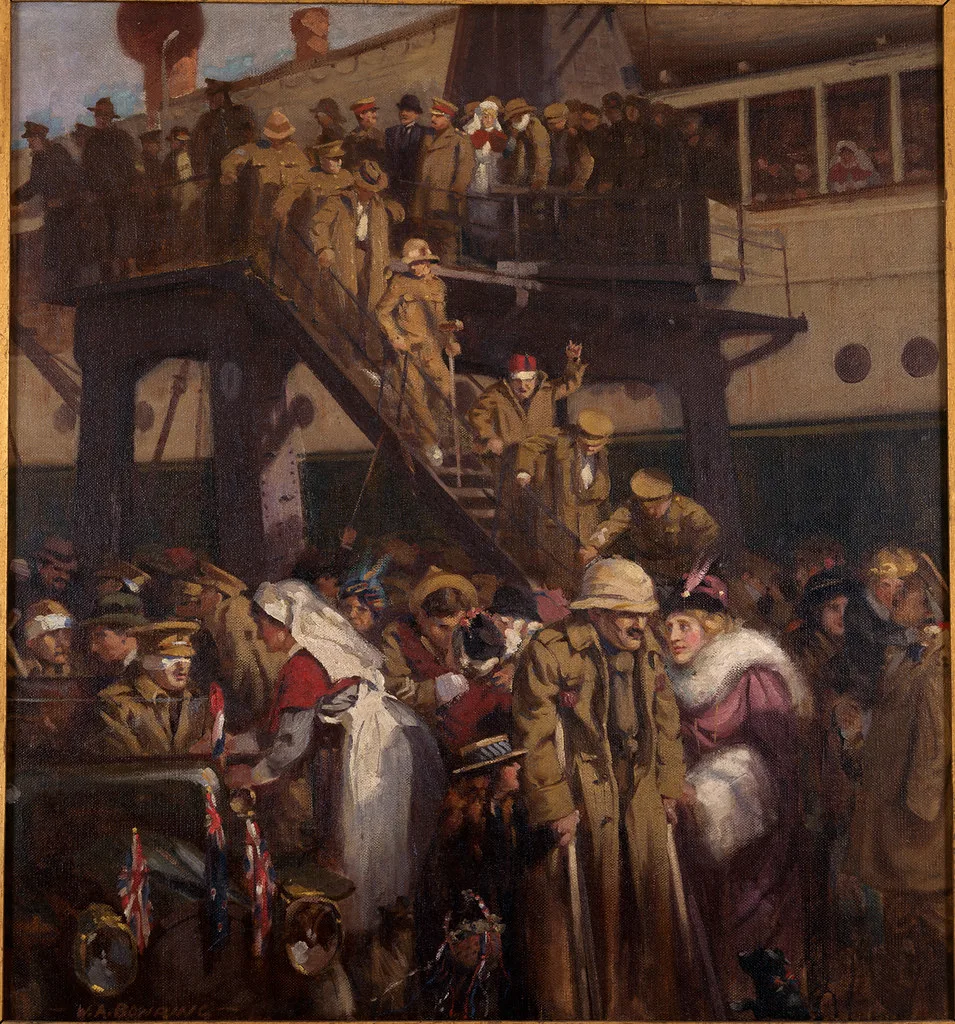
Education
From 1907 the Education Department published material for schools and teachers. The first edition of the School Journal – a monthly reader for primary schools – was also published that year. We hold many original artworks created for these publications.
-
School Journal illustrations pre-1948
This series contains illustrations for the School Journal by artists employed by the Department of Education, School Publications Branch, prior to 1948.
Several well-known New Zealand artists are represented. These are possibly the precursors to the main numbered sequence (series 700). These works were originally in four folders containing works by various artists. Most have a publication reference in pencil on the back. We have listed and boxed the works in alphabetical order of artist.
-
Cover material
This series is made up of cover material for school publications artwork. This includes the Primary and Post Primary Bulletins, the School Journals, and Music and Education Books. These items have the title of articles and overlays.
-
Publication folders
These are folders which contain the original artwork(s) commissioned for a publication (or issue of a publication). These works were commissioned for the following types of records:
journals including School Journals, Junior Journal, and the Journal of Young People's Writing
bulletins, including Primary School Bulletins, Post-Primary Bulletins and Bulletins for Schools
Māori educational resources, including journals such as He Purapura and Te Wharekura
guides, including Suggestions for Health Education in Primary Schools
teachers' handbooks
resource kits
music books
curriculum documents
picture packs
Many of the earlier items in this series may have been part of the series 700 numerical classification, which consisted primarily of pen & ink or pencil drawings mounted on grey card. However, there was no easy way of finding such works and incorporating them into this series. We recommend you consult both.
School publications artwork - main numerical sequence AAAD 700
This is the main post-1948 series of school publications artwork. However please note that not all items are held within this series. Many can be found in series 699 and 6021, but these items have not yet been identified. Most drawings have a label attached to the back stating the artist's name and publication. A supplementary card index has been compiled– see series 6022.
Artwork – Alphabetical Sequence AAAD 781
This series of artworks is probably a relatively early group. It includes work by some major New Zealand artists. The drawings range in date from the early 1940s to 1980. Some have only the artist's name pencilled on the back and others have the publication and date.
Publication Folders – Islands AAAD 782
In 1948, the first two readers for Sāmoan schools were printed and a range of Islands publications ensued. This series appears to comprise the majority of artwork for these publications. No identification has yet been done of the artists represented in this series.
Art Work – Island Publications AAAD 6009
This is a small series of drawings for the School Publications Branch Islands publications.
-
Artwork - Outsize material
Many of these illustrations are part of the main numerical sequence [series 700], but they were separated due to their larger size. Some have a main numerical sequence number pencilled on the back, but not all have been identified. It appears that this series was kept as a separate series by the School Publications Branch. The illustrations range roughly in date from the early 1940s to mid-1960s.
Photographs and drawings ACIG 18014
This series contains drawings from the Department of Education Head Office. The drawings form two groups:
The drawings in group 12 were prize-winning entries selected by the Public Relations Section of the National Bank of New Zealand from works completed by participants in a series of week-long workshops for secondary school students held in the early 1970s. These workshops were sponsored by the bank and run by tutors of national renown such as John Drawbridge.
The drawings in group 13 are school publications drawings of Māori motifs by Selwyn Frederick Muru. The drawings may have been intended to illustrate a series of booklets, but they were never published.
Department of Education - publication artwork AAZY W3901Box/Item 258, 600-605, 669-670, 674-675
This series of records contains artwork created for the School Journal and various Bulletins in the 1970s.
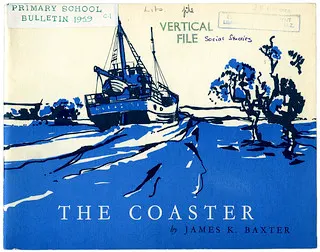
Railway
-
Posters
Posters primarily advertising New Zealand Railways and destinations within New Zealand, such as Mount Cook, Franz Josef Glacier and Waitomo Caves.
New Zealand Railways posters covering a variety of topics, including exhibition tours, seeing New Zealand by rail, and advertisements for various destinations such as Rotorua and Wānaka. Most posters promote the use of New Zealand Railways, but some appear to have a public safety focus, such as a poster giving 'Instructions for the Resuscitation of Persons Suffering from Electrical Shock'.
-
Photographs and artwork
-
Original design artworks
Fifty hand-painted original designs on boards, by artists of the New Zealand Railway Studios (six donated by Hamish Thompson). These document the process of designing advertisements, commissioned by government and business clients, which was one of the Studio’s core functions. The artists are Pop Reid, Maurice Poulton, Barry Ellis and others unknown.

Health
Published posters
Most of these posters were published by the Health Department; a few come from other New Zealand organisations such as the Milk Board, Apple and Pear Marketing Board, and Signal Toothpaste. There are also posters from organisations concerned with dental health in Australia, Great Britain, the United States, Canada, Japan and Singapore.
Most of the posters do not have dates published on them. The earliest appears to be c1930s with a few from the 1940s and 1950s. From 1970 the posters cover various dental health subjects from healthy diets, and cleaning teeth, to fluoridation of water supply.
Poster album
This album may have been for display purposes. On the bottom right corner of the cover it has "Please take care of this book" and a page inside has "As this book represents many hours of work done by Student Dental Nurses. Please be careful when looking through it and do not tear". The book was probably originally a wallpaper sample book.
Most of the posters have the students' names on them. They were painted at classes held at the Wellington Technical College. The subject matter of the posters is aimed at children and includes pictures of fruit and vegetables, teeth and toothbrushes, "Bertie Germ", milk and various animals.
From the style of the lettering and artwork of the posters, they appear to date from the 1940s.
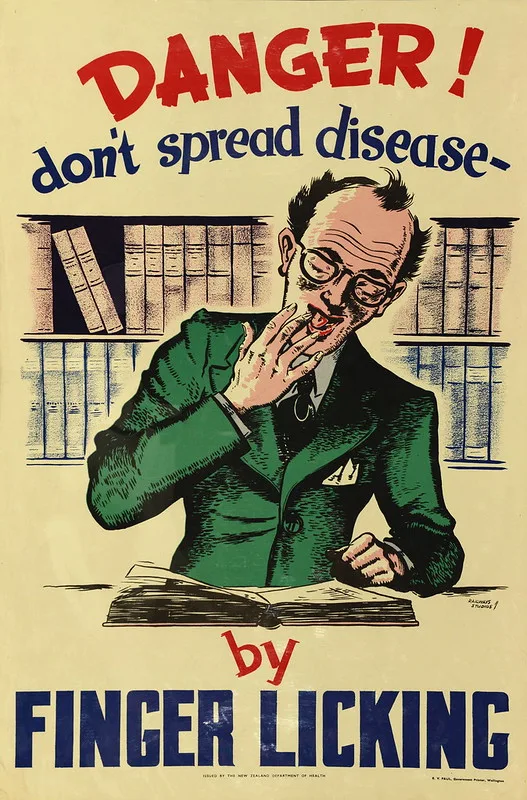
Film and publicity
-
Chief Censors Office: Film posters
These are film posters for films that were assessed through the Chief Censors Office and can be found listed on Collections search by the name of the film. The posters primarily relate to films in the 1970s and 1980s.
-
Golden Kiwi publicity material
Both designs and final copies of posters, ticket, advertisements, and signs are included in the series. Some of the art work may consist of design proposals that were never commissioned. Some of the items have record numbers that were the registration system of the art/publicity company whose designs were commissioned by Golden Kiwi organisers.
-
Posters and photographs
Posters held by the National Film Unit, but not created by them, primarily relating to tourism, as well as some artwork.
-
Paintings
This series contains paintings by National Publicity Studio (NPS) artists and paintings purchased for the NPS Collection. The works were largely used to decorate Ministerial and Department offices. The series includes paintings by the following artists. The first five were employed by the Department:
Marcus King
Howard Mallitte
E Beresford de Lacy
Don Neilson
Peter Scaife
Peter Beadle
Stephen Allwood
Brian Dahlberg
Sam Cairncross
Aston Greathead
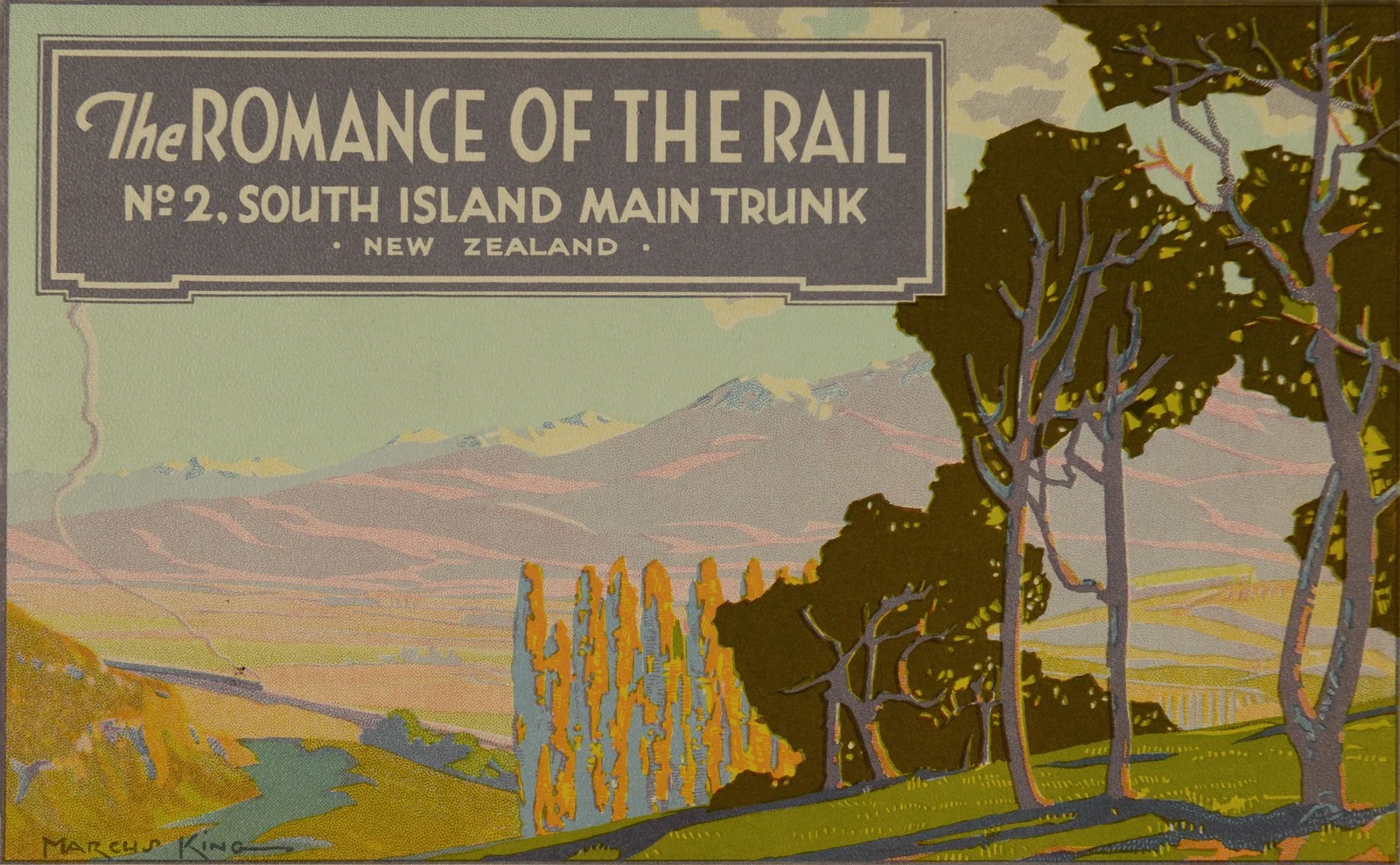
Post office and Telecom
Former Post and Telegraph/Telecom Museum Holdings
This series is a collection extracted from the holdings of New Zealand Post Archives, which was part of the Post Office Museum and Archives.
Posters and sketches Boxes 139, 224-231, 237
Telecom Museum Assorted Records
Engineer-in-Chief Portraits which are searchable by name Item 213
Several posters Items 366, 370, 478
Monument De L'union Postale Universelle, A Berne -Weltpost-Denkmal in Bern [painting] Item 373
Porirua Harbour, c1842 - A watercolour by S.C. Brees (1810-1865) of Thom's Whaling Station and Hotel entitled 'Porerua Harbour' Item 390
Post Office savings bank records
Several promotional posters for the Post Office.

Insurance
Government Life Insurance Archives Collection
Government Life Insurance records, collected and centralised in the organisation's Archives Section which appears to have been established in the mid-1960s. The Archives Section collected Government Life Insurance records considered to have historical or exhibitable value. The varied records include registered files, bound volumes, books, video tapes, film reels, audio tapes, microfilm, photographs, calendars and awards relating to sales agents, posters, various objects including print blocks, signage, advertising material, money boxes, company office seals, etc.
Events and commissions
New Zealand 1990 Commission Posters
The New Zealand 1990 Commission was established in 1988 to initiate activities and events to celebrate the 150th anniversary of the signing of the Treaty of Waitangi, 1000 years of known human habitation of New Zealand, and the 75th anniversary of the landing at Gallipoli. Posters were created for many events.
1993 Suffrage Centennial Year Trust Posters
The posters provide a record of the activities of the 1993 Suffrage Centennial Year Trust and some of the projects that they funded. A number of projects produced posters as part of their work. Where this is the case the project number is noted on the list.
Conservation Week Material and Artwork
AAZU W3619 - Boxes 53, 85-92, 113-117
Various artworks and posters for Conservation Week throughout the 1970s and 1980s.
Miscellaneous records record group
These records consist of ephemera relating to the participation of the Industries and Commerce Department at Expo '70 in Osaka Japan. The items include cartoon artwork.
Technical drawings
Records comprised of patent specifications and drawings as well as design registers with drawings.
Copyright application files
These files often include copies of, or artistic representations of, the material being copyrighted. For more information on Patents and Copyright files see our Employment guide.
Atatū Residential Design Competition Records
These records document the 1977 Te Atatū Residential Design Competition, sponsored by the National Housing Commission, at the request of the Minister of Housing, George Gair. A thirty-hectare site was chosen in Te Atatū, west Auckland. The competition brief called for the design of a comprehensive residential development, requiring the combined expertise of architects, engineers and planners. There were 44 entries, and 6 entries shared the prize money. The display graphics of these six form a substantial part of this series. These winning graphics were reproduced in the National Housing Commission's "Residential Design Competition 1977, Result and Report", a copy of which can be found in this series.
Research Reports National Housing Commission
The National Housing Commission was set up in 1972 to sponsor research into various aspects of housing in New Zealand. The Commission sponsored 74 separate reports 1976-1987 before being devolved in 1988.
Artwork is attached to Research Papers produced by the Commission. For plans of privately built houses please see your local City Council. For plans of State Houses please contact Housing New Zealand.
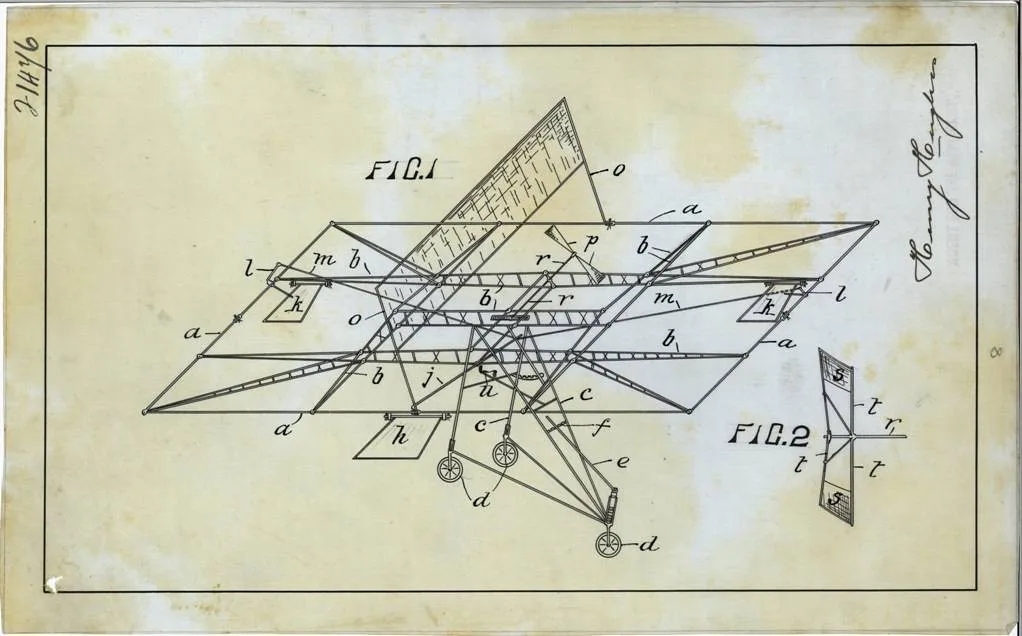
National Airways
The New Zealand National Airways Corporation (NAC), established in 1946, was a government-run domestic airline, operating under its own Act of Parliament. The airline was run as a public utility, with a monopoly on scheduled domestic passenger air services. It was merged with the government-owned international airline, Air New Zealand Limited, on 1 April 1978.
National Airways Corporation artwork
NAC collected several artworks relating to its operations, including watercolours, sketches, and cartoons. The collection is made up of:
7 black and white (ink) cartoons by Nevile Lodge cartoonist for "The Evening Post"
2 black and white (ink) cartoons by Eric Heath cartoonist for "The Dominion"
1 black and white (ink) cartoon by Gordon Minhinnick cartoonist for "The New Zealand Herald"
1 black and white (ink) cartoon by Peter Bromhead
6 watercolours by Earl Hingston
11 pencil/ink sketches by John H. Alexander The cartoons date from 1961 to 1977. The sketches and watercolours are undated.
All these items appear to be originals. The cartoons were published in "The Dominion", "The Evening Post", "The New Zealand Herald" and "The Auckland Star", and the watercolours by Earl Hingston were used in an NAC Annual Report in the 1970s.
National Airways Corporation ephemera
Ephemera collected by the NAC Library to document the history of the National Airways Corporation.
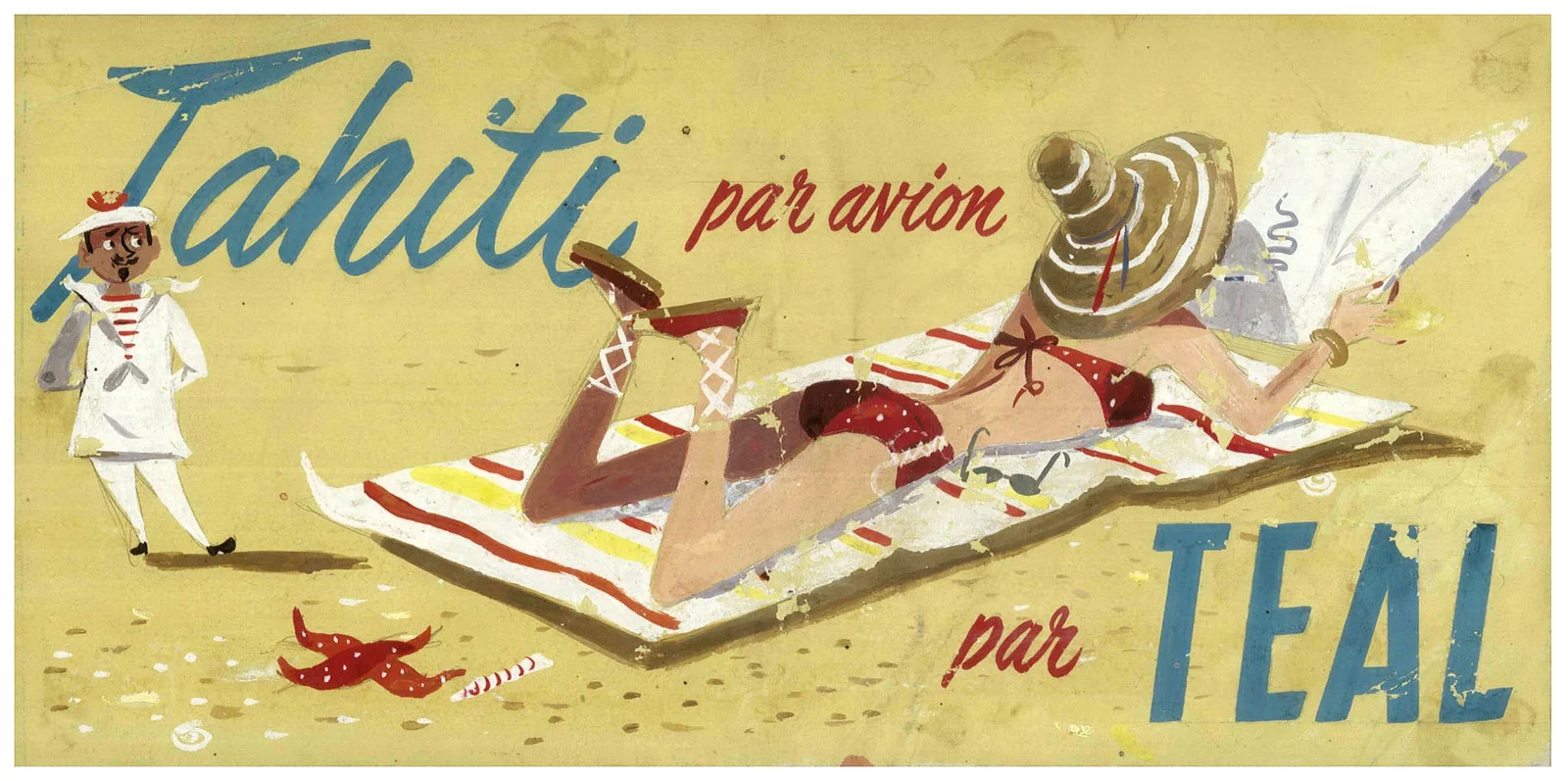
Te Ao drawings
AAMK W3495 Boxes: 31a - 31k
Te Ao Hou was published from 1952 to 1976 by the Māori Affairs Department in New Zealand Aotearoa. It features bilingual content, with articles in both English and te reo Māori.
For more information and electronic copies please see the National Library Te Ao Hou website.
Restrictions relate to copyright. You may view images but not copy or publish them without permission from Te Puni Kōkiri.
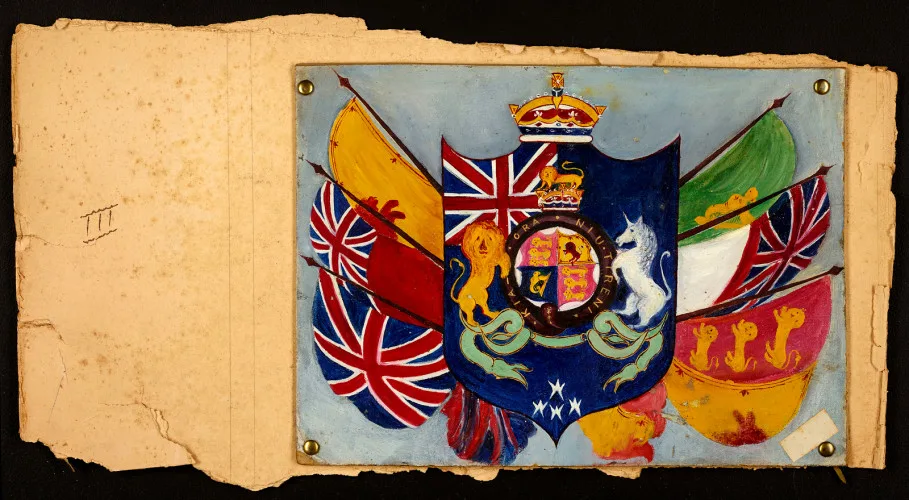
Other artworks
Entries for the Coat of Arms Competitions
Coat of Arms entries - 30 files - are dated 1906 and 1908. The first competition finalists were caught in the 1907 Parliamentary fire and the competition was run again in 1908.
Cartoons
Richard John Seddon Cartoons ACHW 8635 60-65
A collection of scrapbooks covering the main years of Seddon's political career, including 6 books of political cartoons dating from 1893-1906.
David Low Cartoons, Ronald Hipkins drawings and other sketches and paintings ACGO 8367
Industries and Commerce Department Expo 1970 Cartoon panels AEFN 19057 18
Cartoon artwork for New Zealand tourism publications [Restricted] ABKB 8032 W5234 4 27-28
Art on display
-
Public areas
We hold several art works which were commissioned, loaned, or purchased for Archives House, Wellington, many for its opening in 1991.
Tāne Artist: Fred Graham
Above the entry ramp, the centre panel shows Tāne separating Rangi and Papa (sky and earth) which he did with head down and feet up. By this act he let in the light, here symbolising knowledge. Behind Tāne is a stainless-steel sheet with the far north signatories of the Treaty of Waitangi, representing handwritten information. The moko is that of Te Rauparaha. The metal figure is a Pacific Island navigation chart, an ancient way of preserving knowledge. This is balanced by the figure left representing a computer circuit, the most modern form of the same thing.
Kai a te Rangatira (Food for the Chiefs) Artist: Arnold Wilson
Kai a te Rangatira in the Reading Room was commissioned especially for the opening of our new Mulgrave Street premises. Kai a te Rangatira represents the progression of an idea from discussion to recording. The first of the three panels in the work symbolises the formation of a concept or an idea; the second panel the discussion of the idea, and the third panel the recording of the idea -in other words, how an archive is created. The continuous writhing movement of forms suggests figures in discussion, and the figure to the left represents the scribe.
Waitangi Day Mural Artist: Tai Kerekere
This work above the entry steps in the foyer was commissioned by us and was created by the artist with young Wellingtonians as a three-part mural to commemorate Waitangi Day 2007.
Ngatu - Tongan Bark Cloth
Made by local women from Nuku’alofa and gifted to us in 2001 by Pacific People’s Network. It is mounted near Reception.
-
Non-public areas
Small tōtara carving Artist: Rangi Hetet
This carving shows the creator of the building housing the archives. The small figure below is a symbol of continuity. The woven tuku-tuku squares show the different patterns of various tribes.
Tuku-tuku panels and tōtara carvings Artists: Rangi and Erenora Hetet
The shape of this work represents the whare wānanga, or house of learning. It is also the shape of a pātaka, a storage house or place where treasures of the people are kept, representing Archives New Zealand.
The Seven Seas Artist: Fred Graham
Acquired as a permanent loan from New Zealand Line Ltd in June of 1991. To view these artworks you need to make an appointment.
-
Not on display
Memorial to the Māori Battalion Artist: Cliff Whiting
Cliff and his wife Heather worked together on this mural, commissioned for display at Archives New Zealand. It commemorates the Māori Battalion. The shape of the work represents the bargeboards of a meeting house atop the stern posts of a war canoe. Featured is the Māori god of war, Tūmatauenga (overhanging top), and his brother Tāne, the god who separated earth and sky, letting light in. This is shown by the ‘rays’ behind Tāne. Behind the figures one can see the names of the battles the Māori Battalion fought in. These names are intermingled with koru, symbolising the connections between the members of the battalion and their families.
Untitled Abstract Mural Artist: John Drawbridge
This mural was originally commissioned by the New Zealand Government for New Zealand House in London. Consisting of 10 panels, each measuring 3 metres in height and 1.5 metres in width, this work conveys a sense of the patterns of light moving over water and land. The decision to acquire this painting for display at the then National Archives was made in light of the fact that we hold other artworks commissioned by the New Zealand Government, the National Collection of War Art in particular. The mural’s history also helps document past policies of the Ministry of External Relations and Trade regarding New Zealand art and artists.